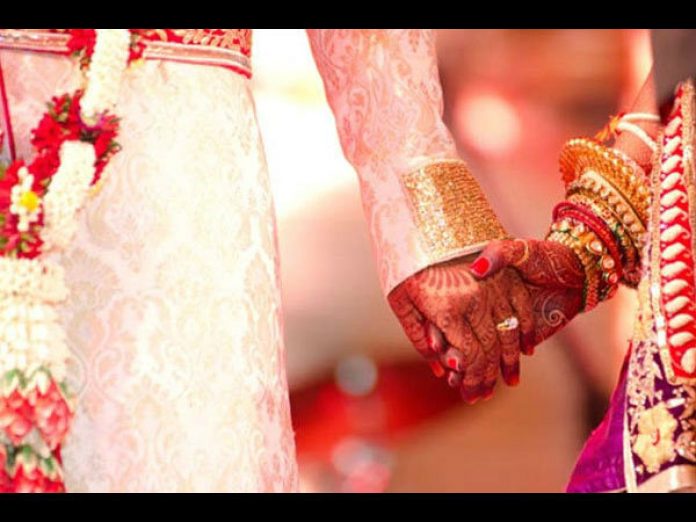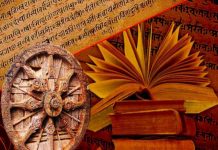This article has been authored by Vaibhav Yadav, a student of National Law University Delhi. The article seeks to clarify the current status of the law on maintenance of second wives and point out why it is insufficient in serving the purpose.
Table of Contents
Introduction
In context of personal laws and marriage maintenance in the popular sense refers to the expenses which a husband is bound to pay to his wife in case of divorce, cruelty, desertion (by husband) etc. However maintenance is not limited to wife only and can also be claimed by parents and children. The purpose behind the provision of maintenance is to ensure that the wife is able to maintain the same standard of life as she had when the marriage subsisted. Maintenance is governed both by personal laws as well as by general laws which are equally applicable to each religion. For example: Section 25 of the Hindu Marriage Act 1955, Hindu Adoptions and maintenance act 1956 lay down maintenance rules for Hindus whereas Section 125 of CrPC does the same for all religions. Any of these acts unfortunately does not have a clear say on providing maintenance to second wives. By second wife here it is meant a woman who has married a man while his first marriage was subsisting. This article focuses upon the problems faced by a second wife in claiming maintenance and seeks to examine the ambiguity in law over the issue under Hindu personal law and general laws like CrPC and Prevention of Domestic Violence Act.
History
Before the enactment of Hindu Marriage Act, 1955 (HMA) the rules regarding validity of marriage were governed by a variety of customs and practices followed by different groups in different regions. Many of such groups followed the practice of polygamy (having more than one wife at a time). One prominent example of it is the act of Kings in folklores and epics having multiple wives. There was no uniformity on the law around validity/invalidity of a subsequent marriage performed while the first one was still subsisting. The HMA tried to standardize the practices under Hindu law and thus made bigamous and polygamous marriages void by the virtue of section 5(i) read with section 11. However even after codification and uniform rules a considerable number of Hindu men have a second wife.
Socio-legal status of a second wife
The Indian society views a second wife more as a concubine or mistress. The use of demeaning and derogatory words for referring to second wives is not uncommon. This social stigma attached to the second wife also manifests itself in law. Over the past years after passing of the HMA many judgments have denied rights to second wives to claim maintenance or seek other matrimonial remedies available to first wives. The void nature of such second marriages has made it very difficult for second wives to get themselves included in the category of “legally wedded wife’ and thus for them claiming maintenance under the capacity of ‘wife’ is a challenging task. This has happened mainly due to the narrow and strict interpretation of the term ‘wife’ in the statutes as meaning the first, sole and lawfully wedded wife. It is clear that the legislators while making bigamy punishable under IPC as well as while drafting the HMA 1955 wanted to preserve the sacred nature of a marriage.
Therefore the existence of a marriage was made an absolute ground for prohibiting a subsequent marriage. However by taking advantage of loopholes in the law men have been successful in entering into bigamous marriages. One such loophole arises from the requirement that for considering a Hindu marriage to be a valid one there must be solemnization of a marriage. Solemnization means celebrating of the marriage through proper rituals. This gives a chance to cunning men to make a woman believe that they have been wedded through proper rituals or to deliberately miss an essential custom during the marriage ceremony so that they can at a later stage use it as a defense to valid marriage. As a result the second wives have been on the receiving end due to the cumulative effect arising out of the exploitation of loopholes and the unfavorable statutory interpretation.
Possible laws for claiming maintenance
Though there isn’t any law in the country which contains any explicit provision or section which entitles second wives for maintenance. There are however laws both secular and personal in character which provide some scope for inclusion of second wives. Some of these laws which are applicable to Hindus are:
- Hindu Marriage Act 1955– The HMA provides for maintenance for both husband and wife under section 25 . Section 25 on the face of it does not contain anything which hints towards the intention of the legislature to include the second wife under its ambit. However the Courts in a few decisions have treated section 25 as an enabling provision which allows discretion to the court to grant maintenance according to the facts and circumstances of a case. In the case of Chand Dhawan the Supreme Court held that the opening statement of section 25- “Court exercising jurisdiction under the Act at the time of passing any decree or at any time subsequent thereto” allows the Court to provide maintenance not only on passing a decree of divorce or judicial separation but also in cases of restitution of Conjugal rights or nullity of marriage. In the case of Rameshchandra Daga v Rameshwari Daga the Supreme Court while providing for maintenance to the second wife held that considering the present state of Hindu marriages in the country though a bigamous marriage is illegal but it cannot be regarded as so immoral so as to avoid compensation to the economically dependent spouse. The court emphasized on the purpose of section 25 to prevent destituteness of the financially dependent spouse.
- Hindu Adoptions and Maintenance Act 1956 (HAMA)– Section 18 of the Hindu Adoptions and maintenance Act provides for the maintenance of wife by the husband. 18(2)(d) of the Act reads that a Hindu wife would be entitled to maintenance from her husband while living separately if the husband has ‘any other’ wife living. In the absence of any specific definition of wife under the said act the language of the section does not explicitly suggest that it seeks to cover only the legally wedded wife (first wife) to be eligible for maintenance. In fact the phrase “if he has any other wife living” under 18(2)(d) can be very well interpreted as according legal status to the second wife. Any argument that this section is only for the first wife’s entitlement for maintenance cannot be sustained. This is because even if it is interpreted to be solely for the purpose of providing maintenance to the first wife due to the husband marrying again during the subsistence of the marriage, the reason it provides for granting the same is that the husband has any other ‘wife’ living at the time. Therefore by its very language it regards a woman married to a man while his first marriage was subsisting to be the wife of the man or to be more specific the ‘other wife’. The HAMA came after the Hindu marriage act of 1955 which prohibits bigamy. Even then the inclusion of a provision about the presence of other wife to be a ground for maintenance intimates that the legislators were aware of the problem that even after prohibition, bigamy was a considerable issue in Hindus and therefore they didn’t seek to exclude second wives or woman party to a void marriage from claiming maintenance.
- The Protection of Women from Domestic Violence Act, 2005– Section 12 of the Domestic Violence (DV) act provides for monetary relief to the ‘aggrieved party’ and does not mention the word ‘wife’. Section 2 of the act defines an aggrieved party as a woman who has lived in a domestic relationship with the respondent. The definition for “domestic relationship” under the act inter alia mentions it to be “a relationship in the nature of marriage”. The court in the case of D. Velusamy laid down that for a relationship to be “in the nature of marriage” it has to fulfill certain pre requisites. As per the pre requisites: (a) the couple should hold themselves out to the society as being akin to spouses (b) must be of legal age to marry (c) must have voluntarily cohabited and held themselves out to the world as being akin to spouses for a considerable period of time and (d) must be qualified to enter into a legal marriage, including being unmarried. Thus as per the interpretation of the court a second marriage performed while the first one was still subsisting is not a relationship in the “nature of marriage” because the husband was not qualified to enter into such a relationship and hence the second wife is not qualified for claiming maintenance under the DV act. The judgement however has its own criticisms. According to the judgement a relationship is in the nature of marriage where the parties are legally qualified to marry and are also performing the responsibilities of husband and wife but their relationship cannot be called ‘marriage’ because of either lack of solemnization or non-fulfillment of any ceremony as per personal law. Thus the judgement attaches more significance to marriage in the formal and technical sense and does not give due importance to the similarity in the obligations and condition of the parties in marriage and “relationship in the nature of marriage”.
- Criminal Procedure Code, Section 125– Under Section 125 of CrPC a magistrate can order a husband to maintain his wife. The object of section 125 is to prevent vagrancy and destitution and to provide a speedy remedy for the supply of food, clothing and shelter. The Supreme Court in the Case of Yamunabai v Anantrao held the claim by a second wife for maintenance to be invalid. The Court said that under S 125 of CrPC for claiming maintenance the woman has to prove that she is the legally wedded wife. In the case of Savitaben v State of Gujarat also it was held that the scope of section 125 cannot be enlarged by introducing any artificial definition to include a second woman not legally married in the expression ‘wife’. However the more recent judgments have followed a rather liberal interpretation of the law. In the 2011 case of Pyla Mutyalamma the Supreme Court though agreed with the law laid down in Savitaben but held that section 125 of CrPC proceeds on the basis of a de facto marriage and not a marriage de jure. Therefore the husband alleging that the second marriage is void due to his already subsisting marriage has to satisfactorily prove the same before the court. If the husband is not able to do so the Court will proceed by assuming it to be a valid marriage and it will be within the Court’s powers to grant maintenance. In 2014 in the case of Badshah v Urmila Badshah Godse the Supreme Court distinguished the cases where the wife is fraudulently led into the marriage by the husband from those where she is aware of the previous marriage of the husband. The Court said that a woman cannot be excluded from claiming maintenance in cases where the husband has duped her by making her believe that she is his first wife. Not doing so would amount to giving advantage to the male spouse for his own wrong and would do utter injustice to the victim as well as to the object of the section of preventing vagrancy and destitution.
Conclusion
The research article has tried to show through the citing of cases and relevant facts and arguments that the task of claiming maintenance for second wives is not as easy and common as in cases of the accepted notion of “legally wedded wives”. However though there is an absence of specific and explicit enabling provisions which empower the second wife for claiming maintenance under the Hindu personal law as well as secular laws it is not the case that claiming maintenance is impossible. The sections relevant to maintenance in HAMA, CrPC and other laws have been interpreted both ways by the Courts.
More recent decisions show a much liberalized approach when compared to earlier decisions. But it has to be consciously accepted and it has been said by the courts themselves in a few judgments that though the law around the maintenance for second wife is problematic but there is an extent to which they can go to liberally and beneficially interpret it. Beyond this limit the role of the Courts ceases and the only scope for betterment can be expected from the legislature which can either amend the existing statutes or bring into existence a new law to alleviate the problems of such women. The present law over the maintenance issue for second wife and other similarly situated women is in a stage where it is not giving due recognition to the rights and legal and social struggles of a particular set of women. Thus there is a dire need to make relevant, clear and unambiguous laws for the second wives to abate their suffering.
LawSikho has created a telegram group for exchanging legal knowledge, referrals and various opportunities. You can click on this link and join:
 Serato DJ Crack 2025Serato DJ PRO Crack
Serato DJ Crack 2025Serato DJ PRO Crack










 Allow notifications
Allow notifications



